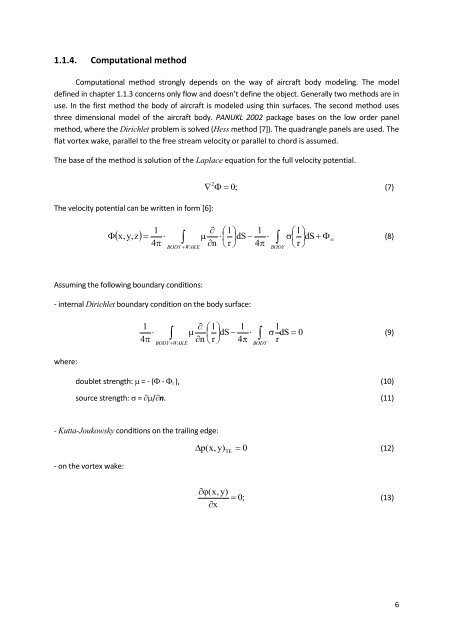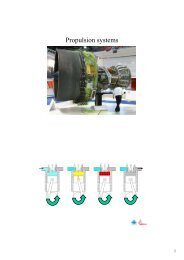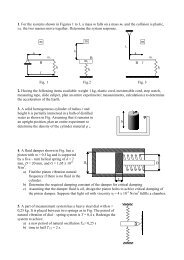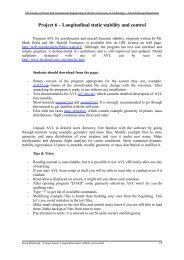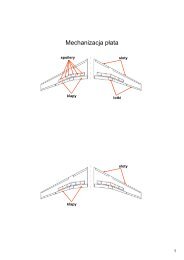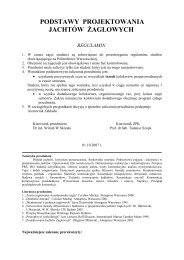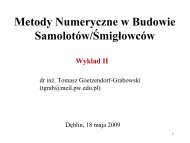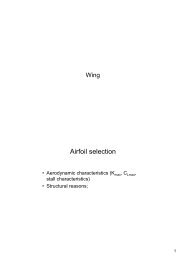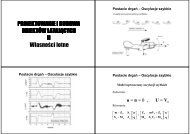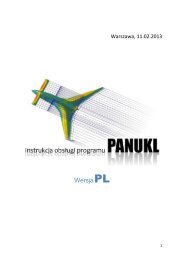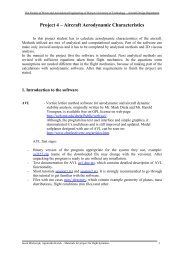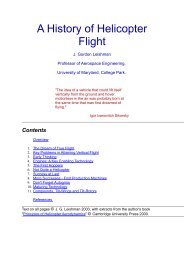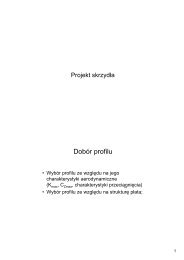PANUKL Help - ITLiMS
PANUKL Help - ITLiMS
PANUKL Help - ITLiMS
Create successful ePaper yourself
Turn your PDF publications into a flip-book with our unique Google optimized e-Paper software.
1.1.4. Computational method<br />
Computational method strongly depends on the way of aircraft body modeling. The model<br />
defined in chapter 1.1.3 concerns only flow and doesn’t define the object. Generally two methods are in<br />
use. In the first method the body of aircraft is modeled using thin surfaces. The second method uses<br />
three dimensional model of the aircraft body. <strong>PANUKL</strong> 2002 package bases on the low order panel<br />
method, where the Dirichlet problem is solved (Hess method [7]). The quadrangle panels are used. The<br />
flat vortex wake, parallel to the free stream velocity or parallel to chord is assumed.<br />
The base of the method is solution of the Laplace equation for the full velocity potential.<br />
The velocity potential can be written in form [6]:<br />
1<br />
1<br />
1<br />
<br />
4<br />
n<br />
r 4<br />
<br />
2<br />
0;<br />
(7)<br />
x, y,<br />
z<br />
<br />
dS<br />
<br />
dS<br />
<br />
BODY WAKE<br />
Assuming the following boundary conditions:<br />
- internal Dirichlet boundary condition on the body surface:<br />
where:<br />
1<br />
<br />
4<br />
BODY<br />
1<br />
1<br />
dS<br />
<br />
n<br />
r 4<br />
<br />
WAKE BODY<br />
BODY<br />
1<br />
<br />
r <br />
1<br />
dS 0<br />
r<br />
doublet strength: = - ( - i ), (10)<br />
source strength: = /n. (11)<br />
- Kutta-Joukowsky conditions on the trailing edge:<br />
- on the vortex wake:<br />
p( x,<br />
y)<br />
TE 0 (12)<br />
(<br />
x,<br />
y)<br />
0;<br />
x<br />
(8)<br />
(9)<br />
(13)<br />
6


